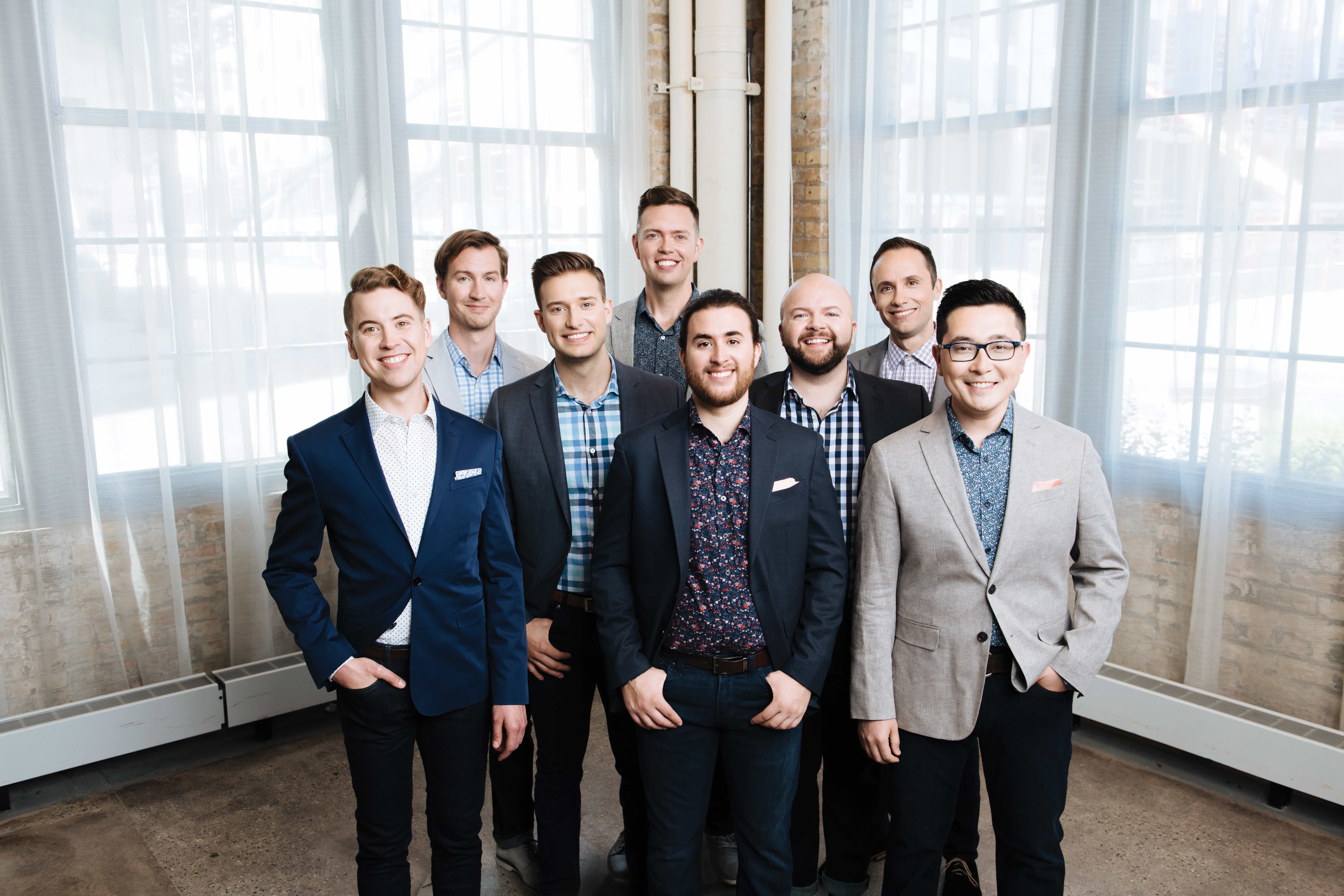Attending Cantus’s Alone Together at the Kennedy Center made me realize that meaningful interaction relies as much upon solitude and mystery as it does connection and revelation. The vocal octet’s song selection also demonstrated the brittle mouth-feel of today’s digitalized language.

The point of the selections featured in the program, according to the artists’ notes, is to explore how the Digital Age has changed how we communicate. All 17 song selections and both encores not only described longing for human contact, but they also either implicitly or explicitly referenced the dark of night. Thus, it was evident to me that maybe what we crave isn’t just connection, as various Cantus members’ wordy interludes of explication emphasized, but time for privacy and quiet reflection too.
A partial list of the evocative words featured throughout the performance: dark, darkness, night, sleeping, waking, depth, day’s end, shimmering spheres, deep, graves, and my favorite, “great silence of black vaults,” taken from Camille Saint-Saens’ Calme des Nuits (Stillness of the Night).
The imagery made me long less for connection than it did for retreat, and caused me to reflect that the components of a fully formed person, one who knows how to generate as well as receive authentic communication, develop best in the stillness when we sleep, when we dream, when it’s quiet, when we are able to contemplate the stars — all things we have sacrificed in exchange for our 24/7 digital tether that incessantly blinks, buzzes, and beeps.
It made me wish that the singers had talked less during their performance about their longing to be known and understood, and instead had trusted that the dream sequence of songs they were spinning were instructive enough on their own.
The program was anchored by three works from contemporary American composers Libby Larsen, Steven Sametz, and David Lang. Larsen’s YOU, making its Washington premiere, and Sametz’s We Two are based on works by American poets Emily Dickinson and Edna St. Vincent Millay, and Walt Whitman respectively.
“Americans speak in quite a few one-syllable words,” Larsen told me in a pre-show interview, explaining why she’d chosen nine specific mono-syllabic words including “love” and “you” and “now” as the framework for the verses. “So, the nine was all I needed. [Dickinson’s and St. Vincent Millay’s] poetry felt musical and essential in the frame of these words.”
I agree with Larsen’s assessment. Her monosyllabic choices when sung felt like being pinged with notifications, but not with meaning, exactly as she had predicted. By contrast, the poetry not just of the two women, but also of Whitman, sounded lush in comparison with the pop songs in the program, redolent with juicy syllables written during eras when words were longer and richer with the absence of the rush to text and send them. Larsen’s and Sametz’s musical settings did not feel like embellishment but were perfectly wrought to underscore how inherently lyrical the poems are.
That’s not to say that the night’s selection of modern-day troubadours aren’t skilled at story-telling, but careful attention to the lyrical potential of language was more evident in the pre-Twitter era songs of Simon and Garfunkel, Lennon and McCartney, and Dave Matthews than those of other featured artists like Arcade Fire whose Deep Blue is compelling, but because you want it to resolve, not because you’re carried along in a reverie.
Lang’s haunting Manifesto is a musical setting of algorithms created from actual online searches for love that begin with “I want to be with someone who…”. What the work lacks in poetry, it balances with ache. Lang succeeds in matching the searching stream of consciousness effect of the lovelorn with his rushing arrangements reminiscent of early Kate Bush albums. I liked it. It doesn’t resolve, but it doesn’t feel bleak. The message is all who search are hopeful. Yet, there also was the panic at the thought of being alone.
After the show, I asked one of the Cantus members if the emphasis on darkness had been intentional. He thought I meant dark emotions and pain, and began to explain how all of their work does this to one degree or another.
But that was not at all what they’d emphasized, or if they thought they had, then they missed the mark. Their technical precision as an ensemble and their sweet affableness sets them apart. But it wasn’t until the carefully curated message-y part was through and it was time for the encores of When the Earth Stands Still by Canadian composer Don MacDonald and There’s a Meetin’ Here Tonight arranged by American gospel artists Joe and Eddie, that the group’s authenticity burst through: the guardedness in their singing gone, their voices suddenly dripping with soul, and their obvious thrill for making music together.
That was when I fell in love with them.
I stopped him mid-explication. What I meant by darkness was the genuine article, just the restful, close your eyes and float kind. Then, no, it wasn’t what they’d intended, he averred.
This misunderstanding goes to the heart of the night’s performance. There was plenty of self-focused anxiety, but it felt like an avoidance of darkness, not an exploration of it.
The group’s unawareness of their many references to darkness made their point about disconnection better than did the actual thematic song selection. Despite their technical excellence, Cantus’s Alone Together lacked earnest depth. It was plenty together, but not enough alone.
Running time: Approximately 90 minutes with one 15 minute intermission.
Part of the Fortas Chamber Music Concert Series, Cantus performed on Wednesday, November 13, 2019, at 7:30 p.m. at the Kennedy Center Terrace Theater, 2700 F St NW, Washington, DC. More information can be found online.




